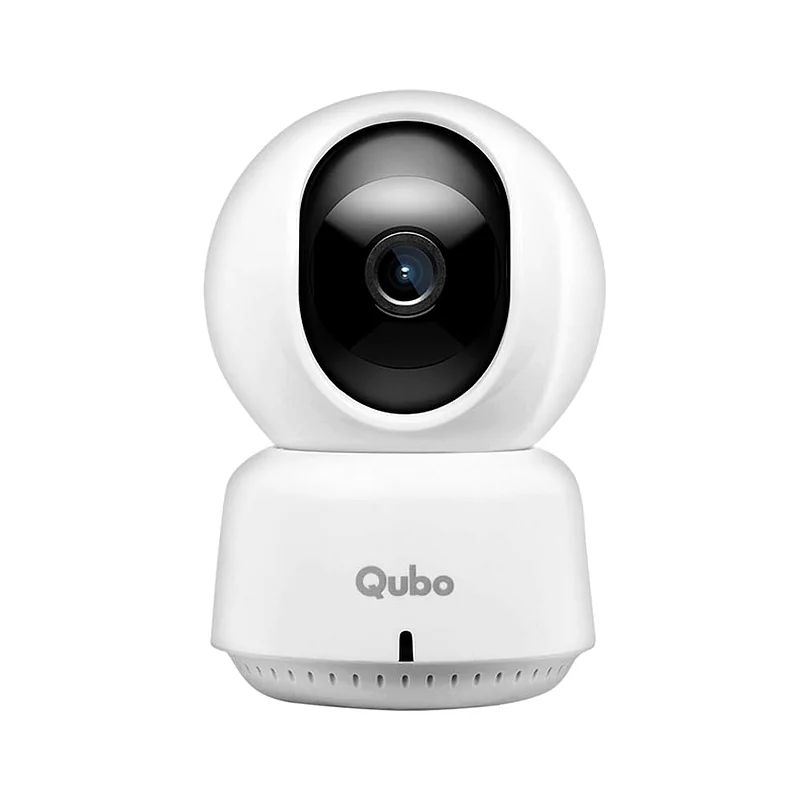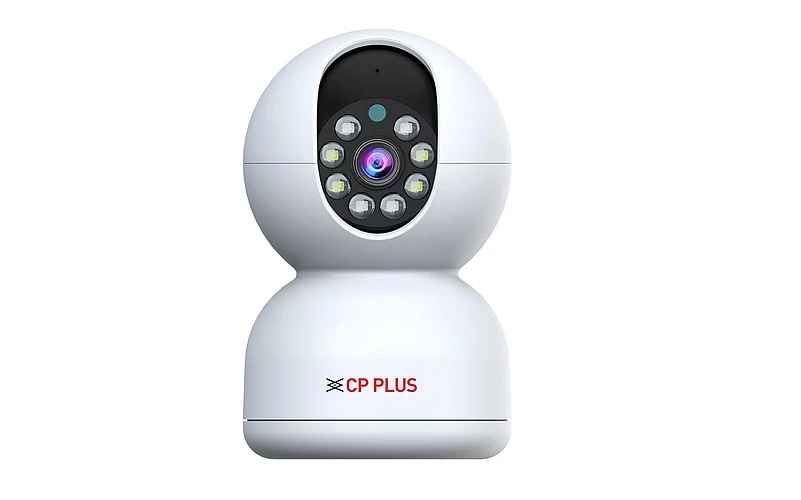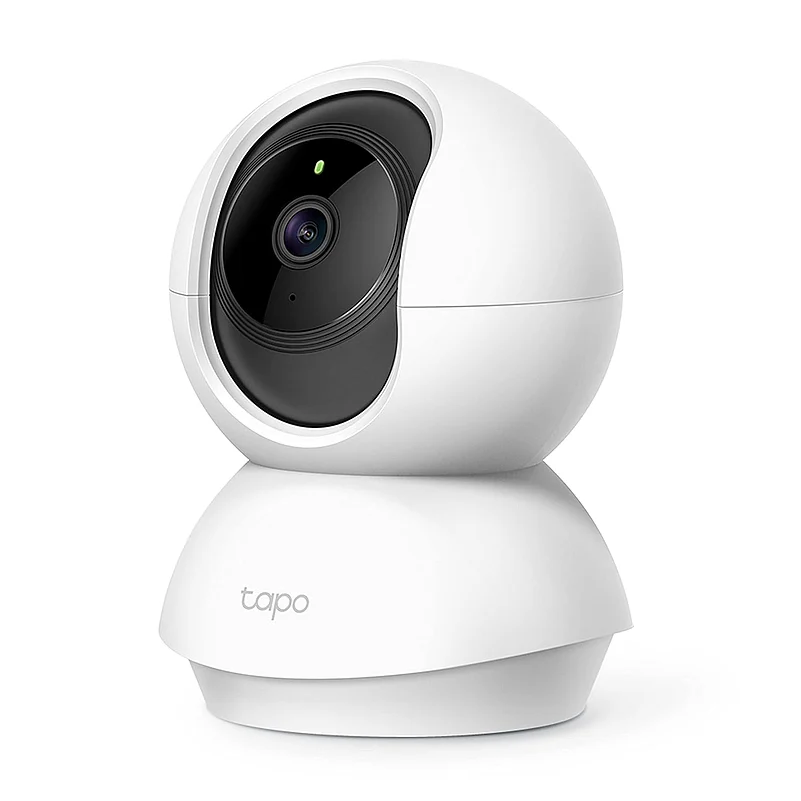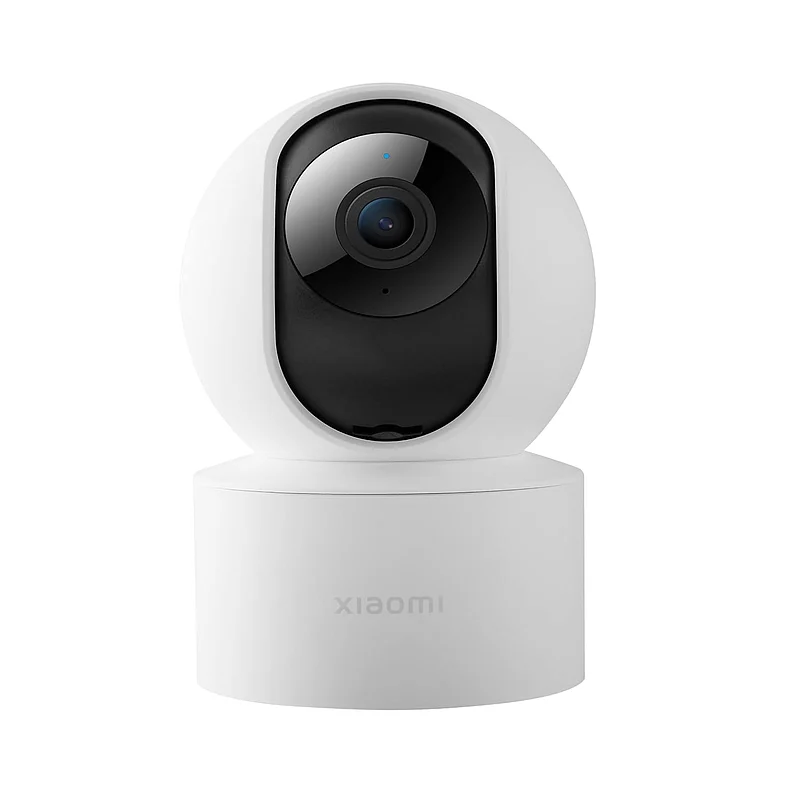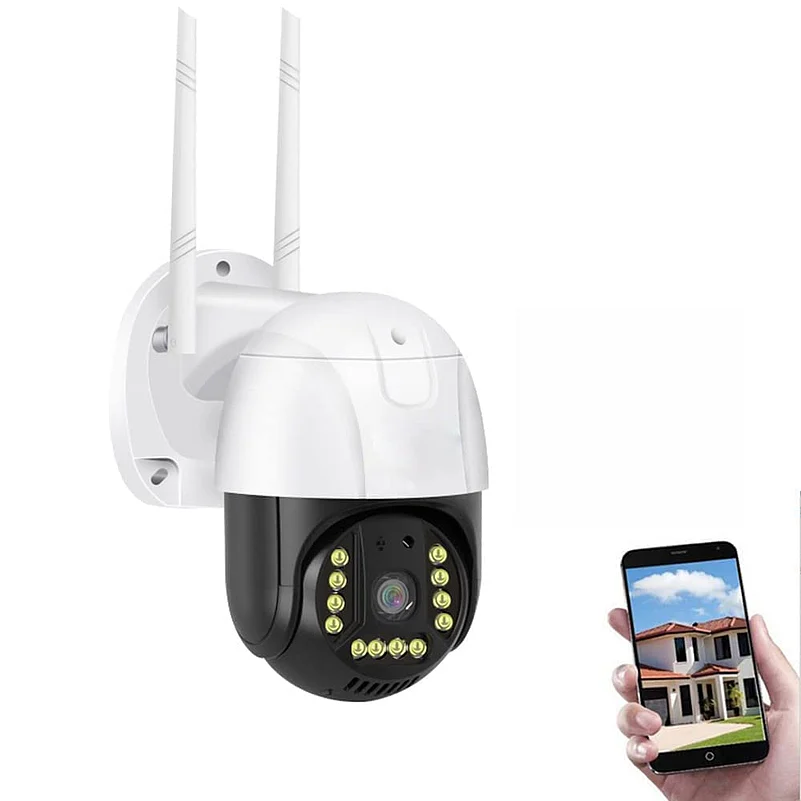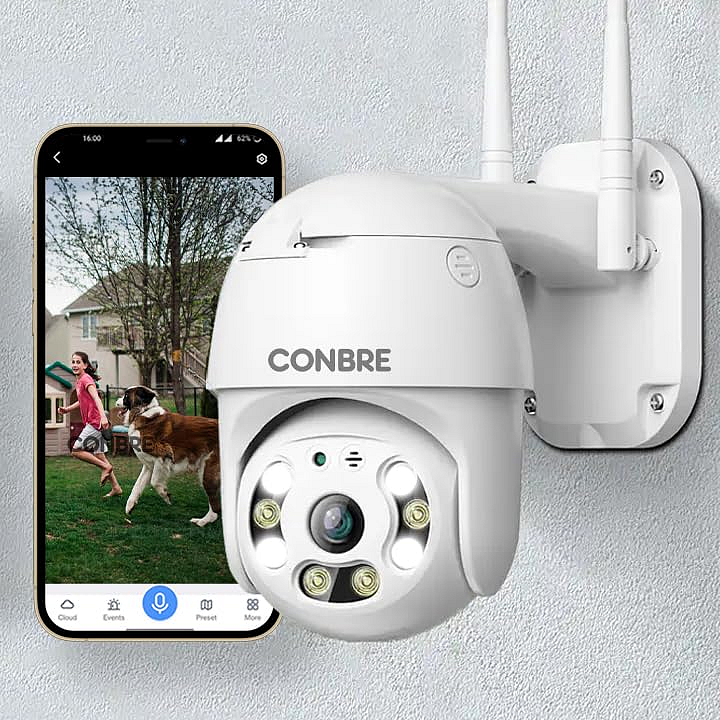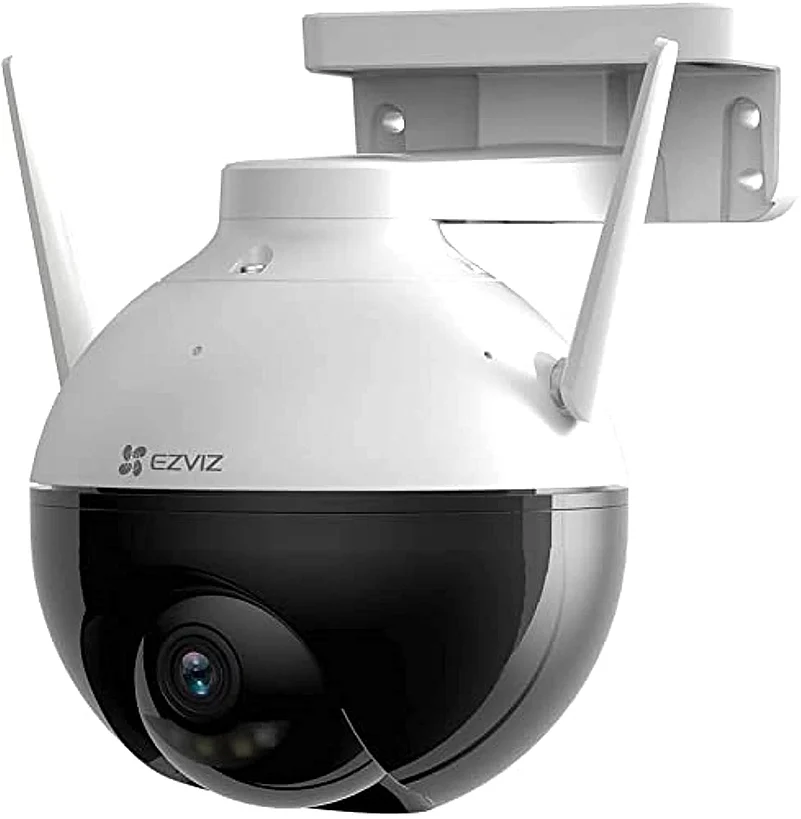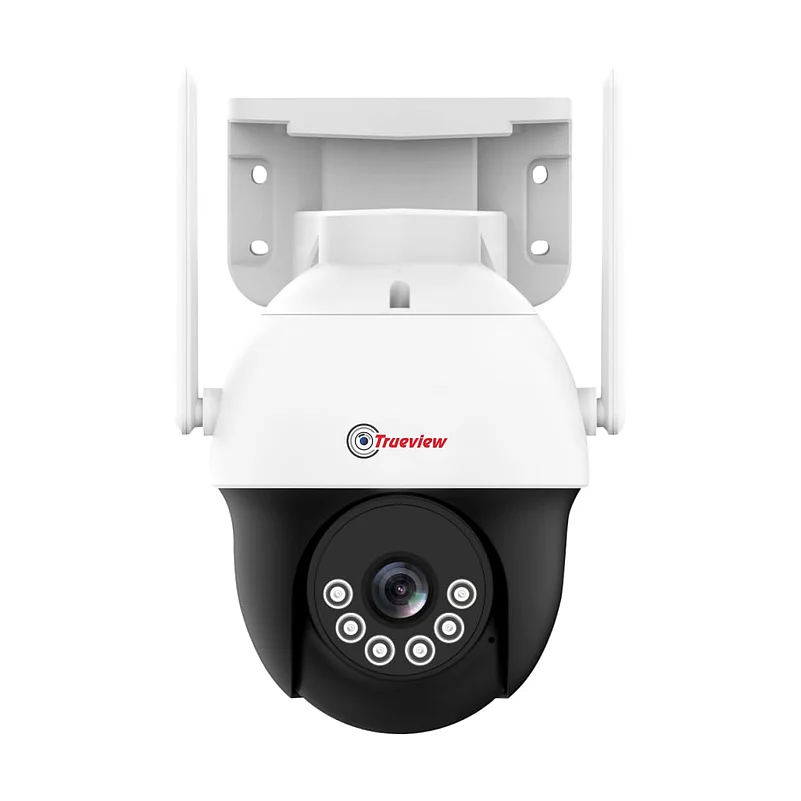What's in the box?
User’s Review : "Using it in 4G mode at my house construction site. Have put it in open on an electric pole (with a makeshift covering). Has been working fine since last one month. Though there had been two massive thunderstorms and heavy rains. The video quality during night is not very good, maybe due to distance involved, so won't be able to comment with conviction. Rest would recommend."
Why it's worth buying: Its wireless connectivity and ample storage capacity make it a convenient and reliable choice for effective surveillance.
Shop now
Types of CCTV Security cameras
Dome Cameras: Dome-shaped cameras suitable for indoor and outdoor use, providing a wide viewing angle.
Bullet Cameras: Sleek, cylindrical cameras ideal for long-distance viewing, often used in outdoor settings.
PTZ Cameras: Pan-Tilt-Zoom cameras that offer remote control over viewing direction and zoom for flexible monitoring.
IP Cameras: Internet Protocol cameras that transmit data over the internet, providing high-quality footage and remote access.
Wireless Cameras: Cameras that connect to the network wirelessly, offering easy installation and flexibility in placement.
Day/Night Cameras: Cameras equipped with sensors to capture clear images in both daylight and low-light conditions.
Thermal Cameras: Cameras that detect heat signatures, ideal for areas with poor visibility or no light.
ANPR Cameras: Automatic Number Plate Recognition cameras used for vehicle tracking and identification.
360-Degree Cameras: Cameras that provide a complete 360-degree view, suitable for large open areas.
Covert Cameras: Discreet cameras designed to be hidden from view for covert surveillance.
Factors to consider when shopping for a CCTV Camera
Resolution: Higher resolution cameras provide clearer images. Consider options like 720p, 1080p (Full HD), or even 4K for better clarity.
Field of View: Determine the coverage area you need and choose cameras with appropriate field of view angles to ensure complete coverage.
Night Vision: Opt for cameras with infrared (IR) LEDs for clear monitoring in low-light or no-light conditions.
Weather Resistance: If installing cameras outdoors, ensure they are weatherproof and rated for the environmental conditions they'll face.
Power Source: Decide between wired cameras requiring constant power supply or wireless cameras running on batteries or solar power.
Storage: Choose between local storage options like SD cards or network video recorders (NVRs), or cloud storage for remote access to footage.
Remote Viewing: Look for cameras that offer remote viewing capabilities via mobile apps or web browsers for convenient monitoring from anywhere.
Motion Detection: Cameras with motion detection capabilities can alert you to potential threats and save storage space by only recording when motion is detected.
Audio: Consider whether you need cameras with built-in microphones for audio recording.
Integration: Check compatibility with other smart home or security systems you may have for seamless integration and automation.
On what basis we chose them for you
Performance Evaluation: We thoroughly assessed the performance of each camera based on factors such as resolution, field of view, night vision capabilities, weather resistance, and reliability.
Comparison Analysis: We conducted a detailed comparison analysis, weighing the pros and cons of each camera model to determine its suitability for different surveillance needs and environments.
Brand Reputation: We considered the reputation and track record of each brand in the CCTV industry, prioritising brands known for producing high-quality, reliable products.
Customer Feedback: We reviewed customer feedback and testimonials to gauge user satisfaction and identify any recurring issues or praises regarding specific camera models.
Price Consideration: While ensuring quality and performance, we also took into account the affordability of each camera option, offering a range of choices to suit different budget constraints.
Frequently Asked Questions (FAQs)
Which CCTV camera is best for outdoor use?
How to install a CCTV camera at home?
Installing a CCTV camera at home involves selecting an appropriate location, mounting the camera securely, and connecting it to a power source and recording device. Follow the manufacturer's instructions provided with the camera for specific installation steps tailored to your model.
What is the difference between analog and IP CCTV cameras?
Analog CCTV cameras transmit video signals over coaxial cables and require a DVR for recording, while IP CCTV cameras send digital data over an IP network and can be viewed remotely. IP cameras generally offer higher resolution and more advanced features but may require a stronger network connection.
How does night vision work in CCTV cameras?
Night vision in CCTV cameras typically relies on infrared (IR) LEDs to illuminate the area with invisible infrared light, allowing the camera to capture clear images in low-light or no-light conditions. Some advanced models, like those with colored night vision, provide enhanced visibility even in complete darkness.
Can CCTV cameras be hacked?
While no system is entirely immune to hacking, you can minimize the risk by using strong passwords, keeping firmware updated, and using encrypted connections. Additionally, choosing reputable brands with a focus on security, like those mentioned earlier, can enhance protection against potential vulnerabilities.
In conclusion
CCTV cameras play a crucial role in enhancing security and surveillance, offering peace of mind and protection for homes and businesses.Investing in a reliable CCTV camera from our list of recommendations ensures a robust security system, backed by reputable brands known for their quality and performance. Whether for outdoor or indoor use, these cameras offer a range of features to suit various surveillance needs, making them a valuable asset for any security setup.














